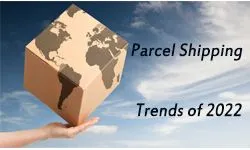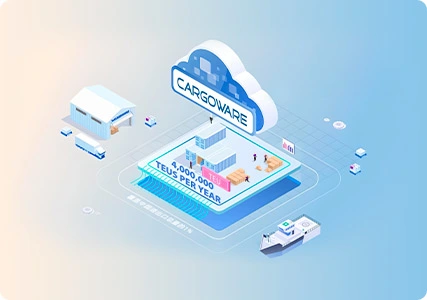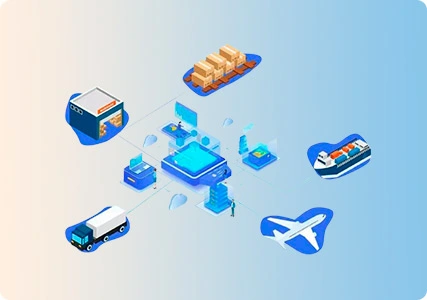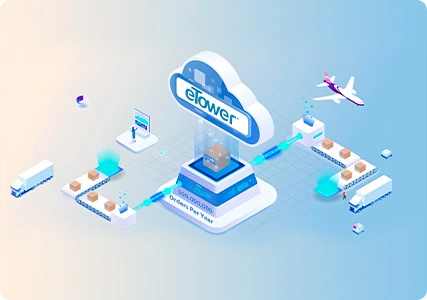Still, in the midst of a global epidemic, the cross-border parcel logistics industry will continue to experience transformation in 2022. With carrier capacity constraints and carrier rate increases, as well as pressure to meet customer demand for fast, free shipping, many companies are beginning to consider how best to strengthen their supply chains to withstand future disruptions in 2022. While expanding the carrier network will be one of the keys to improving the delivery experience, and is probably the easiest place for most companies to start, you can expect the following cross-border parcel logistics trends to emerge in the coming months.

1. The market is becoming carrier-driven.
As demand for e-commerce deliveries increases, cross-border parcel logistics shippers learn in 2021 that even the largest carrier logistics providers such as FedEx, UPS and DHL may reach capacity thresholds and turn away business. These capacity issues will not only persist, but will be exacerbated by ongoing labour service shortages.
Brands with relatively low order volumes may be affected as parcel logistics shippers prioritise larger, more profitable partnerships. Even so, larger companies will be affected if delivery is delayed due to the complexity of the process and the high cost of labour time.
Manufacturers and retailers are expected to continue to work with their existing carrier partners, moving to new complementary carriers and building multi-carrier logistics shipping strategies to achieve greater flexibility, reduce risk and optimise costs without compromising the customer experience.
Proactive logistics shippers use Parcel Transport System-eTower with integrated complex business rules to execute these strategies quickly and at scale, and handle decisions related to capacity constraints, volume-related costs and volume-related rate increases - constantly balancing delivery performance and price tagging inbound and outbound with multiple carriers transportation.
2. Data visibility transparency.
Increased data visibility will enable brands to make informed decisions and deliver the best possible outcomes for their end consumers and profits, while still being able to cope with potential disruptions in the months or years ahead.
3. Odd-job economy operators will continue to be in the spotlight.
The courier armada helps these retailers alleviate their need for more traditional carrier services, often significantly reducing the number of packages queued up by these carriers. Fortunately, these services are growing to meet new demands, and more odd-job economies are racing to implement the right technology to accommodate requirements for higher levels of security, proof of delivery, signature capture and more.
4. Reverse logistics will make headlines.
With the continued rise of e-commerce, retailers are increasingly focused on reverse logistics strategies. According to the Wall Street Journal, the extended return window for holiday shoppers in 2021, combined with rate increases for parcel carriers, could significantly reduce profit margins. They estimate that between $112 billion and $114 billion in merchandise could be returned to US retailers, up from $100 billion in 2020 and $95 billion in 2019.
How can parcel logistics shippers manage return costs while making returns fast, easy and hassle-free for their customers?
Some companies will avoid returns altogether, including many luxury brands, which will continue to opt to skip fees and improve customer service once and for all by allowing their customers to keep invalid purchases. E-retailers (sellers without physical shops) will increasingly follow suit by telling customers to keep incorrect products and avoid the cost of returns.
For those companies committed to handling returns, they will reduce return costs by implementing a multi-carrier strategy. Equipping parcel fulfillment teams with a choice of multiple carrier services and technology that facilitates inter-carrier service rate shopping will keep costs low and enable teams to address any carrier service delays or disruptions.
In addition, prioritising convenience, every effort will be made to foster customer loyalty. Visionary organizations that prioritise the customer experience will simplify returns by using dual-use labels (labels for outbound shipments and returns) or peel-off labels (outbound labels are easily peeled off to expose returns) labels) and accepting returns for shop online orders.
Business intelligence will become a "must have" feature of parcel logistics systems.
Given the challenges of 2021, the ability to make the right transport decisions has never been more important. The best way for logistics shippers to make the right decisions is to understand their parcel logistics shipping data and perform the necessary analysis. For most logistics shippers, this will mean analysing hundreds of carrier services, volumetric weight factors, surcharges, shipping zones, pricing structures and SKUs for parcel shipping operations - and highlighting where the money is. Better still, the analysis will provide a blueprint for how to increase savings.
The good news is that logistics shippers won't have to record multiple spreadsheets for long periods of time to complete these analyses. A parcel logistics shipping system with business intelligence provides shippers with an easy way to aggregate, normalize and report shipping data, and.
Eliminate single data, connecting people, processes, data and technology so teams can make contextual decisions and link parcel logistics shipping operations to company strategy.
Identify inefficiencies and empower shippers to improve on-time delivery rates, logistics shipping speeds and order volumes.
Demonstrate the impact of carrier capacity constraints and order demand, enabling managers to adjust carrier and transport budgets to meet customer expectations.
Demonstrate insight and provide leaders with a source of truth and telemetry data to confidently guide, forecast and report on parcel logistics shipping operations.
Leverage 2022 cross-border logistics trends and partner with eTower
For most supply chain teams, continuing to take a strict parcel logistics shipping approach is no longer effective. Instead, supply chain leaders need to adopt a more flexible approach that allows them to forecast, adjust and prioritize in a shorter timeframe to address everything from changing market dynamics to carrier capacity issues. The companies that will be successful in 2021 are those that can instantly optimize parcel order fulfillment strategies, quickly compare order fulfillment scenarios and make informed decisions to adapt to ongoing changes in consumer demand, reduce on-time delivery risks and maintain a competitive advantage.
There is no better time than now for supply chain leaders to prepare to thrive in the new era of strategic supply chain planning. Contact eTower to help you grow your business efficiently across borders.










